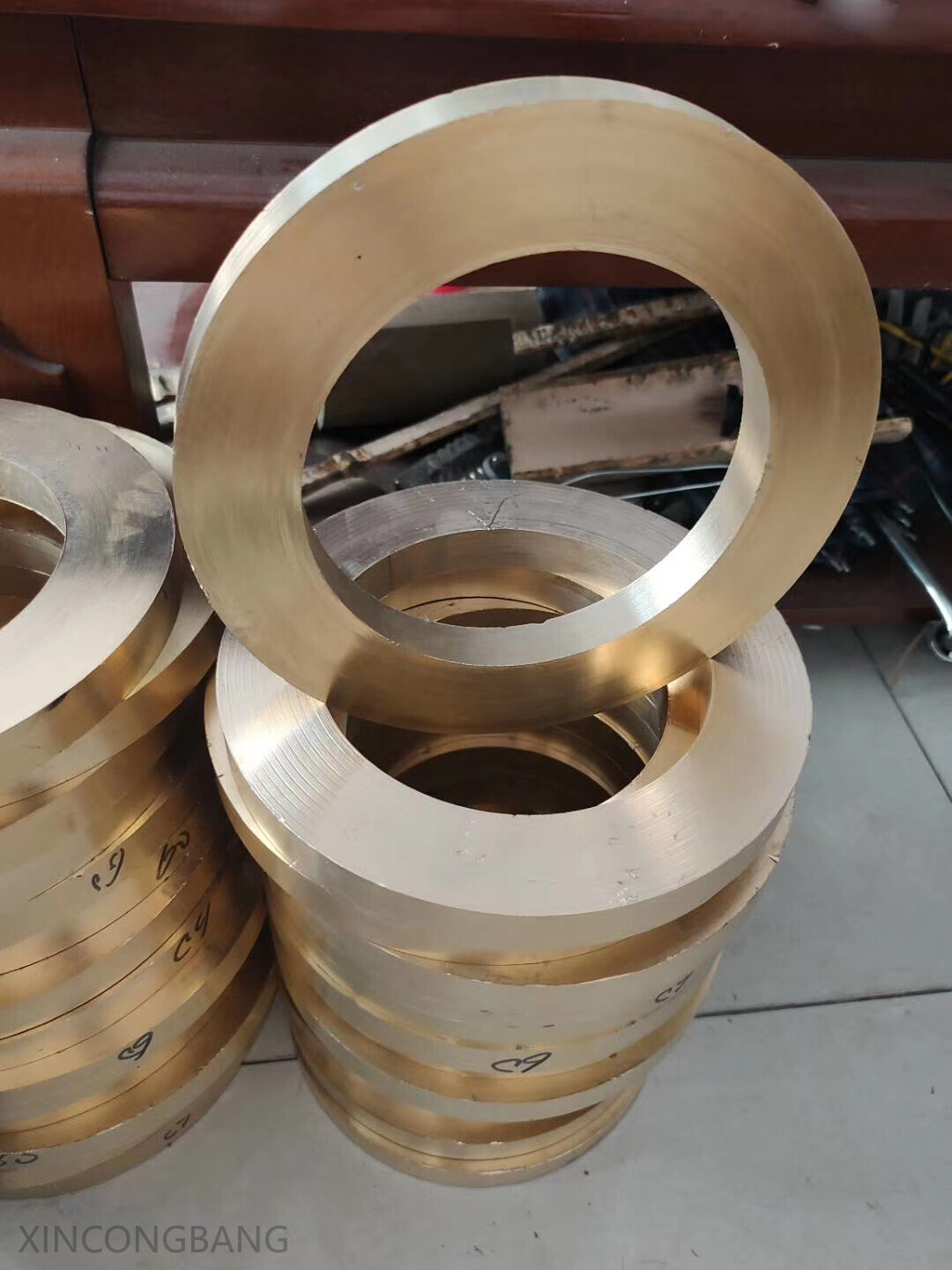Dimensional Ranges for C93200 Bushings
C93200 bushings are available in standardized shapes and sizes, optimized for industrial applications:
Notes:
- Rectangular bushings are also available up to 20" (508 mm) in width, but these are less common for standard bushing applications .
Custom lengths and diameters can be manufactured for specialized requirements.
Key International Standards
C93200 bushings comply with the following standards, ensuring global interoperability and quality:
Additional Standards:
- MIL-B-11553: U.S. military specification for bronze bushings .
- ISO 4382-1: International standard for plain bearings (material compatibility) .
Detailed Chemical Composition of C93200 Copper Alloy (in Weight Percentage)
C93200, also known as SAE 660 or High-Leaded Tin Bronze, has the following standardized chemical composition ranges:
- Copper (Cu): 81.0–85.0%
- Tin (Sn): 6.3–7.5%
- Lead (Pb): 6.0–8.0%
- Zinc (Zn): 1.0–4.0%
- Nickel (Ni): ≤1.0%
- Antimony (Sb): ≤0.35%
- Iron (Fe): ≤0.20%
- Phosphorus (P): ≤0.15%
- Sulfur (S): ≤0.08%
- Silicon (Si): ≤0.005%
- Aluminum (Al): ≤0.005%
The alloy may also contain trace amounts of manganese (Mn) and other elements, but these are not primary constituents
Mechanical Properties of C93200 Copper Alloy
C93200 exhibits a balanced combination of strength, wear resistance, and machinability. Key mechanical properties include:
Tensile and Yield Strength
- Tensile Strength: 213–241 MPa (31–35 ksi)
- Heat-treated (M07 temper): 241 MPa (35 ksi)
- Yield Strength (0.5% offset): 103–138 MPa (15–20 ksi)
- Heat-treated (M07 temper): 138 MPa (20 ksi)
Ductility and Hardness
- Elongation at Break: 10–20% (varies with processing)
- As-cast condition: 20%
- Cold-worked/heat-treated: 10%
- Hardness:
- Brinell Hardness (HB): 65
- Rockwell B Hardness: Up to 70
Elastic and Compressive Properties
- Elastic Modulus: 117 GPa (16,969 ksi)
- Poisson’s Ratio: 0.34
- Compressive Strength: 315 MPa (45,700 psi)
Fatigue and Impact Resistance
- Fatigue Strength: 110 MPa (16,000 psi)
- Izod Impact Strength: 8.00 J (5.90 ft·lb)
Physical Properties
- Density: 8.8–8.94 g/cm³ (0.318–0.323 lb/in³)
- Thermal Conductivity: 59.0 W/m·K (409 BTU·in/hr·ft²·°F)
Thermal Expansion Coefficient: 18.0 µm/m·°C (10.0 µin/in·°F)
Additional Notes on Performance
- Machinability: Rated 70% (excellent due to lead content) .
- Corrosion Resistance: Resists biofouling and corrosion in marine/chemical environments .
- Applications: Widely used in bearings, bushings, pumps, gears, and automotive components due to its wear resistance and load-bearing capacity .
Production process and product advantages of C93200 copper bushing:
1. Production process
Casting process
C93200 alloy is mainly produced by continuous casting, centrifugal casting or sand casting. The continuous casting process can form a high-density non-porous structure, reduce tool wear and scrap rate. Centrifugal casting avoids defects such as sand holes and pores by controlling the rotation speed and casting temperature (such as 854-977°C) to ensure material uniformity.
Machining and molding
The cast blank is machined by turning, drilling, milling and other machining steps to make bushings with complex shapes. Its excellent machinability (Machinability Rating 70) supports precision tolerance requirements.
Surface treatment
Includes pre-degreasing, shot blasting, phosphating (partial outsourcing treatment) and other processes to improve surface quality and corrosion resistance. Some bushings also require vulcanization processes (such as rubber vulcanization) to enhance functionality.
4. Welding and heat treatment
Supports technologies such as gas tungsten arc welding (GTAW) and resistance welding. Heat treatment (such as annealing at 750-850℃) can optimize mechanical properties and improve hardness and strength.
2. Product advantages
Material characteristics
Wear resistance and load-bearing capacity: The synergistic effect of lead (6-8%) and tin (6.3-7.5%) significantly improves wear resistance, with a tensile strength of 300 N/mm² and a Brinell hardness of 75 HB, which is suitable for high-load scenarios.
Corrosion resistance: It has excellent resistance to seawater, moisture and chemicals and is suitable for marine environments.
Lubricity: The lubricating properties of lead reduce friction and reduce maintenance requirements.
Processing performance
Zinc (2-4%) improves alloy fluidity, and lead improves cutting performance, supports efficient machining, and can be processed into a variety of bushing types such as straight barrel and flange.
Wide application
Automotive industry: used for bearings, piston pin bushings, suspension bushings, etc. to ensure durability at high speeds.
Heavy machinery: such as crane bearings, rolling mill bearings, hydraulic press bushings, withstand high pressure and impact loads.
General fields: pumps, valves, impellers and other components, compatible with a temperature range of -450°F to +500°F.
Economical and maintenance
Long service life, low maintenance cost, only regular lubrication is required to extend the service life. Composite material optimization (such as adding 4.5% marble powder) can further improve wear resistance.
Q1:Do you provide samples? Is it free or extra?
A1:Yes, we can provide samples free of charge and the customer will pay the freight.
Q2:What if I don't have export experience ?
A2:We have reliable forwarder agent which can ship items to you by sea/air/Express to your doorstep. Any way, we will help you choose the most suitable shipping service.
Q3:How long is your lead time?
A3:If it is in stock, it is usually 5-10 days. Or, if there is no inventory, 15 days, depending on the quantity.
Q4:What are your terms of payment?
A4:30% T/T deposit in advance, 70% T/T balance within 5 days after B/L copy, 100%.Irrevocable L/C at sight, 100% Irrevocable L/C after receive B/L 30-120 days, O/A.
Q5:How is your technical support?
A5:We provide lifetime online support through Whatsapp/ Skype/ Wechat/ Email. Any problem after delivery, we will offer you call anytime.
Welcome To Your Inquiry
What can we help you?
RELATED PRODUCTS










